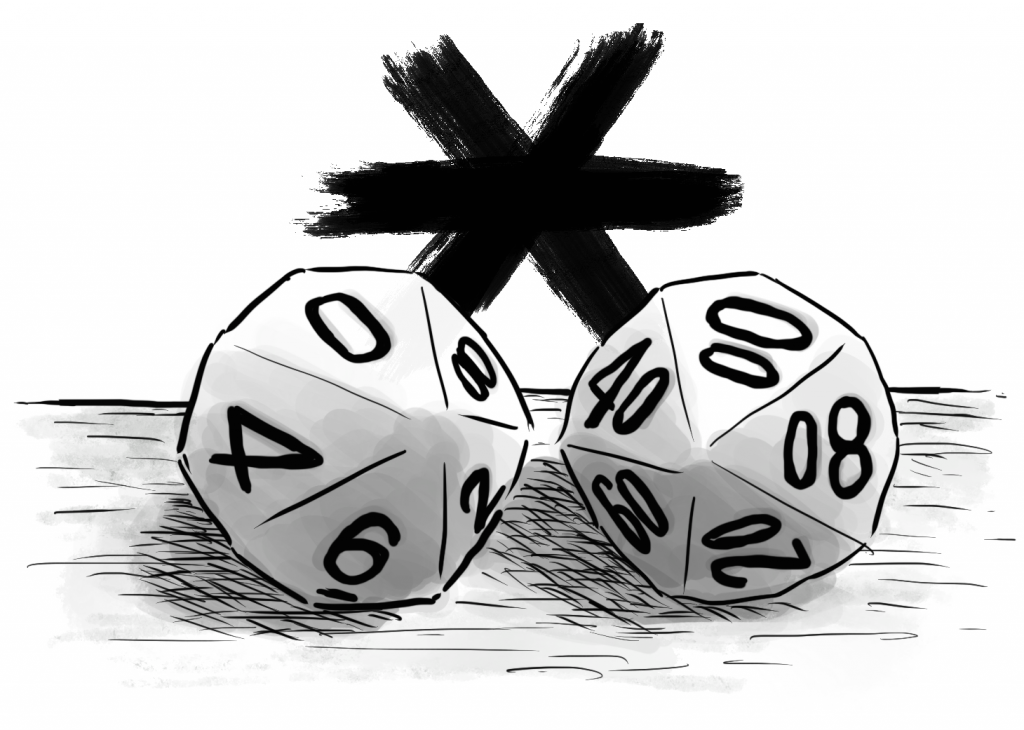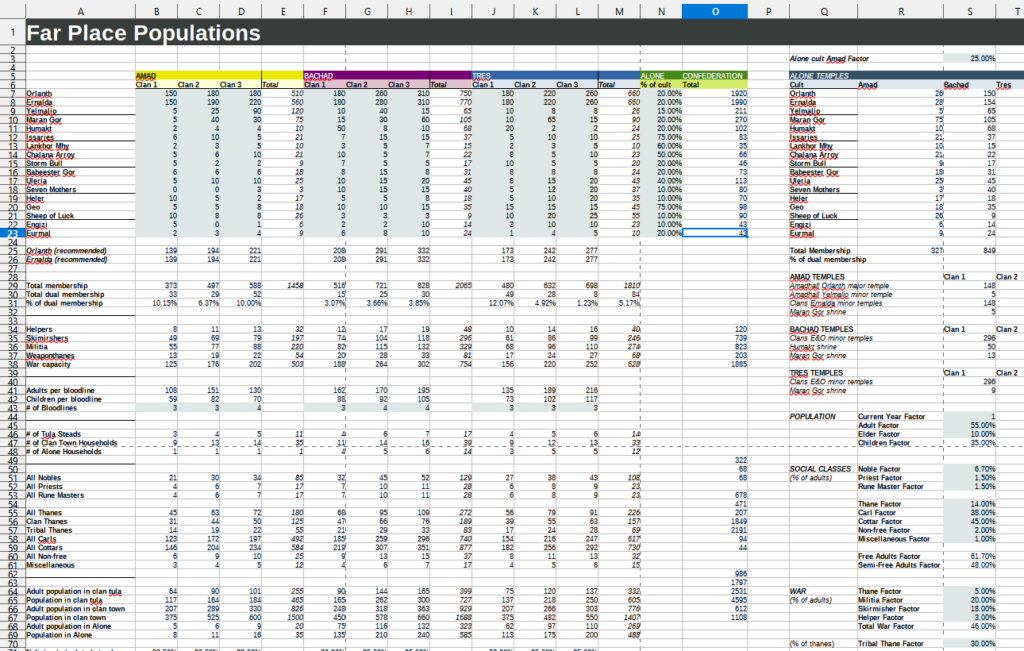
Runic Rants is an irregular series of thoughts, opinions, and experiments about RuneQuest.
I originally posted this in the RuneQuest Facebook group, but of course I’m re-posting it here, lightly edited, for posterity.
It might sound very nerdy, but I think a lot of questions get answered by making a spreadsheet for your Glorantha setting. The first spreadsheet I made keeps track of the population in terms of cult memberships, villages and farms, spirit societies, and so on. You can make it as part of your campaign preparation, or you can grow it as you make stuff up for your game.

Over time, my spreadsheet grew beyond what would be considered “sane”, and nowadays I don’t even understand what’s going on in there (see above), but it was extremely useful.
This exercise really helped me realize a few things. For instance, you very easily “run out” of initiates for any given cult once you’ve allocated 2/3rds of your adults to Orlanth and Ernalda. There can be a certain amount of multi-initiation, of course, but in my Glorantha that’s quite uncommon. Allocating these numbers at the clan, tribe, and tribal confederation levels quickly shows you what kinds of shrines and temples you can and cannot have (based on the minimum number of worshippers from the rulebook). A clan can only support a temple to Orlanth and Ernalda, maybe one patron deity temple or shrine, and not much else. A lot of things will go up to the tribal or city level, where worshippers from many surrounding clans can gather and make a shrine (or more) viable. These are your minor cults (Babeester Gor, Chalana Arroy, whatever) whose members therefore live in the city and work for all the tribes, instead of being each “stuck” in their clan with only a handful of co-initiates and no good cult infrastructure. And even then you’ll often realize that some cults don’t even fit in your tribal confederation, and that’s when you’ll have PCs and NPCs travelling to another city for important worship and festivals and services.
This is similar to, say, the difference between the local countryside doctor, the specialist in the nearby town, and the hospital in the nearest city. Or the difference between your municipal police, state law enforcement, and federal agencies. Humakt is like the FBI, Storm Bull like the ATF, etc. The municipal police (Orlanth Adventurous clan warrior) is supported/complemented by the state (Orlanth Adventurous warrior from the tribal king’s retinue) You get the idea. In the amazing TV series Justified, Raylan Givens is a gender-switched Babeester Gor (US Marshall) who comes from the Harlan clan but now works at the Lexington city temple for the entire confederation… although of course he needs to constantly go back to where he grew up and deal with that drama.
This really helped me get a grasp on Orlanthi life.

Of note for the grognards among you, this is why all the little nitpicky cults from the old HeroWars books aren’t sustainable. They cannot logically be separate cults/subcults, there’s just not enough people. The spreadsheet immediately shows that.
But they can be used as narrative flavour for what happens inside a temple. These names and elements of lore can refer to cult heroes and cult spirits that are part of the main cult. They can be used to describe different “specialties” within this main cult. So you might have different types of Orlanthi cultists in the same way that you have different FBI agents. Data analysts, communications experts, and field investigators are very different, but they’re all FBI agents who work at the FBI office. You can use the obscure HeroWars names to describe different specialties within the Orlanth cult, but they’re still all Orlanthi cultists who worship at the Orlanth temple.
If you have any comment about this Runic Rant, or some ideas for a future installment, please send them to us!


I too have many gloranthan spreadsheets! Though not as many as you it seems, and definilely not as pretty or detailed. If you are curious, here are some of mine (some are in spanish). https://imgur.com/a/HLcAYDK
Oh nice! Thanks for sharing! 🙂